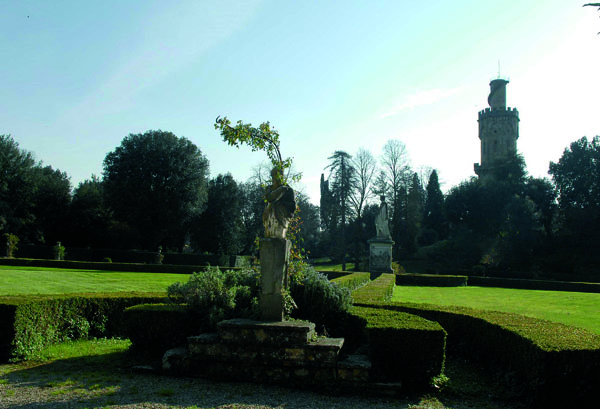The secret green oasis of Florence
The most beautiful natural sights of the city
On the face of it, Florence appears to be a bit of a stone jungle with little green to be seen on the long, hot trek from one museum to the next. Look beyond the stern Renaissance facades and sun-baked piazzas, however, and you will discover that all is not what it seems; the city is full of hidden gardens tucked away behind impenetrable iron gates and forbidding walls. The Boboli gardens is justly famous, but you really have to be in the know to access the less obvious of the city’s lushest spaces.
Yet to be discovered by the tourists and finally open to the public after five years of restoration, the state-owned Parco Bardini offers one of the best photo opportunities in Florence. This green oasis lies in the Oltrarno on a steep hill wedged between Piazzale Michelangelo and Boboli; the close-up views of the city from the top terrace are magnificent. The garden started life as a series of walled orchards, but has been altered and enlarged over the years. Today, it retains its 15th century layout with terraces and paths planted with irises, roses, wisteria, hydrangeas, spectacular giant azaleas, fruit trees and dotted with statues and fountains. At the top is a charming ilex wood and the ‘Dragon’s Canal’, a faux-Chinese water feature.
A different type of garden altogether is to be found just north of Piazza San Marco. Owned by Florence university, the Giardino dei Semplici for the most part maintains the original layout designed by Tribolo for Cosimo I dei Medici in 1545-46. One of the three oldest botanical gardens in the world, it’s a haven for museum-weary feet and contains rare medicinal plants, flora, herbs and trees, as well as exotic and tropical specimens from all over the world housed in several impressive 19th century greenhouses.
Back in the Oltrarno near the old gate of Porta Romana and covering six hectares, the Giardino Torrigiani is the largest garden within the city walls. It has been part of the Torrigiani estates since the 16th century when it was famous for its cultivation of rare plants. Now divided between two branches of the family, it was extended in the early 19th century and transformed into the type of English landscape style garden that was all the rage at the time and presents a harmonious combination of Neogothic architecture (including a magnificent heptagonal tower, a ‘ruin’ and a small hermitage), sculptures, paths winding past smooth lawns and areas of dense woodland.
So much for city centre gardens, but if Florence’s relentless tourist hoards become too oppressive, head to the hilltop village of Settignano and Villa Gamberaia. The estate is home to one of Tuscany’s most famous gardens, a grand Baroque design set among olive groves and immersed in birdsong with far-reaching views of the Arno valley and Florence. The satisfyingly symmetrical water parterre garden, complete with lily ponds, topiary box hedges and central fountain is the most famous feature, but there are other charming corners; the romantic ‘gabinetto rustico’ with its seashell and pebble-decorated grottoes, the dripping, lichen-covered nymphaeum and the lemon garden where citrus trees in splendid terracotta vases perfume the air with their blossom.









